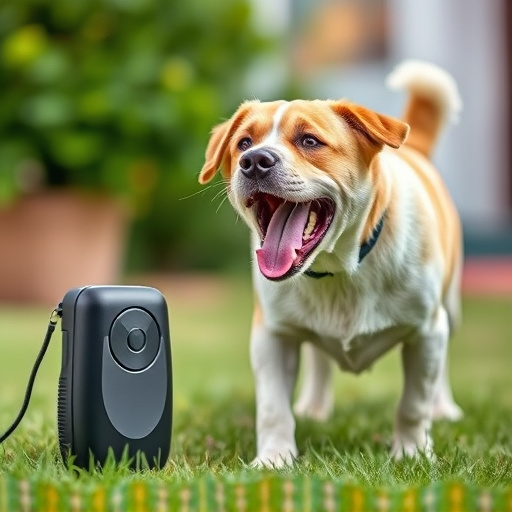Sonic dog repellers, using high-frequency sound waves, offer a humane way to deter dogs from unwanted areas like gardens and farms. To install effectively, identify problem zones (e.g., fences) with clear line-of-sight, mount the device firmly, and adjust sensitivity levels. Regular activation is key for optimal results in training and preventing dog returns.
Introducing our comprehensive guide to sonic animal training safety devices, specifically focusing on their application for dogs. This technology offers a humane and effective way to train pets while ensuring human and animal safety. In this article, we’ll explore the benefits of sonic dog repellers, delving into their versatile applications and how to install them optimally—a crucial step for maximizing their effectiveness. Discover where to place your sonic repeller for best results.
- Understanding Sonic Animal Training Safety Devices
- Benefits and Applications of Sonic Dog Repellers
- Installation Guide: Where to Place Your Sonic Repeller Effectively
Understanding Sonic Animal Training Safety Devices
Sonic animal training safety devices are innovative tools designed to protect both pets and their owners while ensuring effective training. These devices use high-frequency sound waves, inaudible to humans but irritating to dogs and other animals, to deter unwanted behaviors like barking, digging, or aggression. Understanding how these devices work is crucial for their successful implementation.
When considering where to install a sonic dog repeller, it’s essential to identify areas prone to problematic animal behavior. Common locations include outdoor spaces like gardens, patios, or fences. Strategically placing the device in these areas can help train dogs to avoid certain zones, promoting better behavior and creating a safer environment for everyone. Additionally, proper installation involves ensuring line-of-sight between the device and the target area to maximize the effectiveness of the sonic waves.
Benefits and Applications of Sonic Dog Repellers
Sonic dog repellers offer a humane and effective solution for deterring unwanted canine visitors in various settings. One of the primary benefits is their ability to emit high-frequency sound waves that are unpleasant to dogs, encouraging them to stay away from specific areas without causing harm or fear. This makes them ideal for use in gardens, backyards, and even on farms where pets need to be kept out of certain plants or crops.
These repellers can be strategically installed near entry points like fences or gates, providing a gentle but powerful deterrent. Whether you’re looking to protect your vegetable garden from curious dogs or keep your precious flowers safe, these devices offer a versatile and customizable solution. They are easy to set up and often feature adjustable sensitivity levels, allowing you to tailor the protection to your specific needs without affecting other animals or causing any distress.
Installation Guide: Where to Place Your Sonic Repeller Effectively
When installing a sonic dog repeller, the first step is to choose a strategic location. Opt for an area that offers line-of-sight visibility towards the problem zones where your pet tends to roam or display unwanted behavior. Common spots include fences, patios, or balconies—any place where the device’s sound can be projected effectively without barriers. Ensure it’s firmly mounted and stable, as vibrations from the device should be consistent for optimal performance.
Avoid placing the repeller too close to windows or doors, as this could cause unnecessary disturbances for neighbors. Additionally, keep in mind that these devices operate best when used consistently; regular placement and activation are key to preventing your dog’s return to problematic areas.
Sonic animal training safety devices, particularly sonic dog repellers, offer a humane and effective solution for managing canine behavior. By understanding their operation and strategically placing these devices (in specific areas where dogs tend to congregate or cause disturbance, such as gardens, patios, or public spaces), pet owners can enjoy enhanced outdoor living without compromising the welfare of their pets or local wildlife. Always remember to follow installation guidelines carefully for optimal results and to ensure the safety of all animals in the vicinity.
